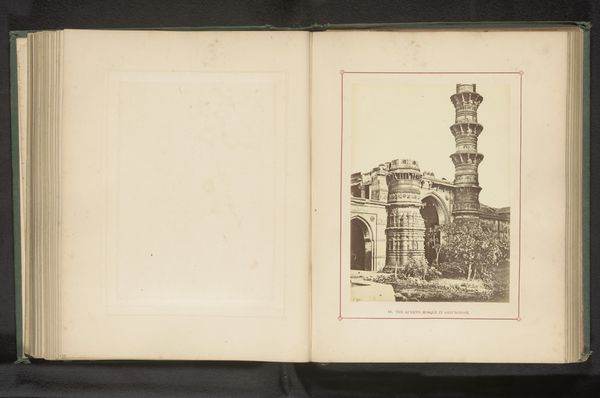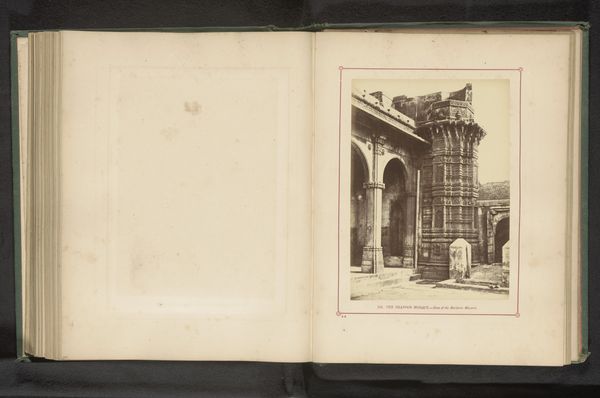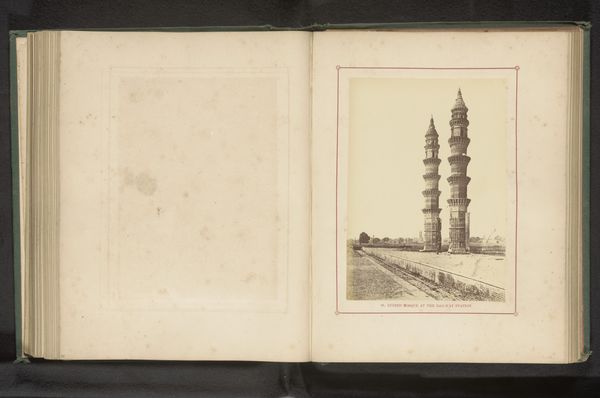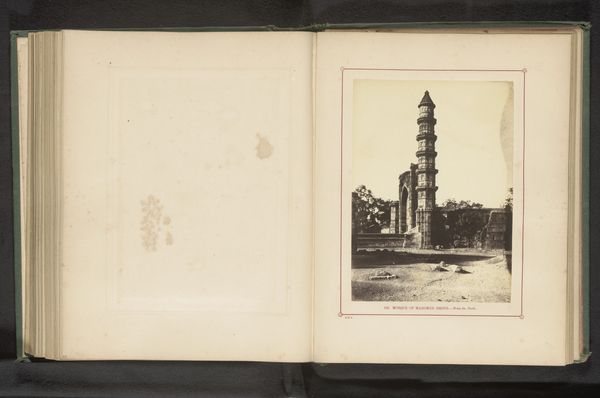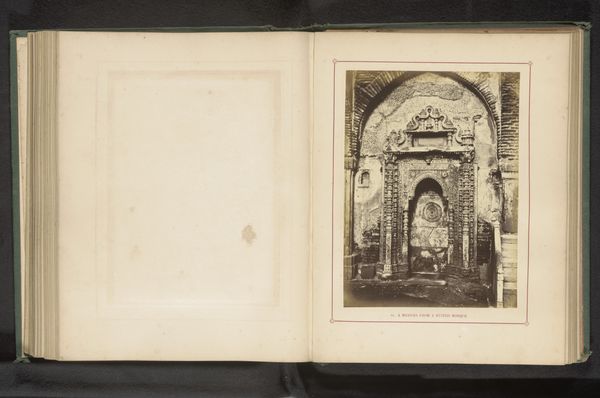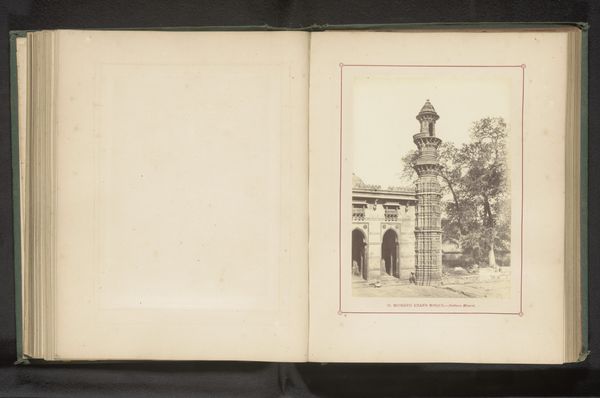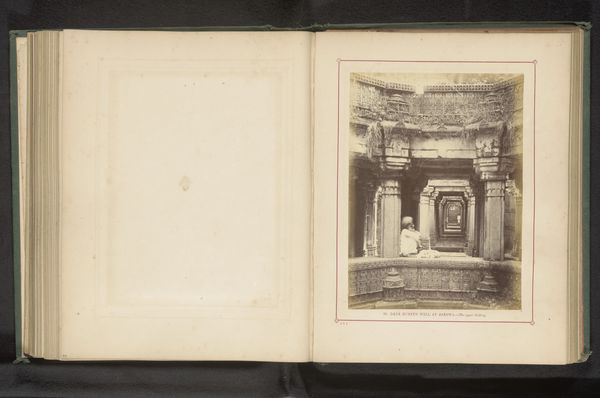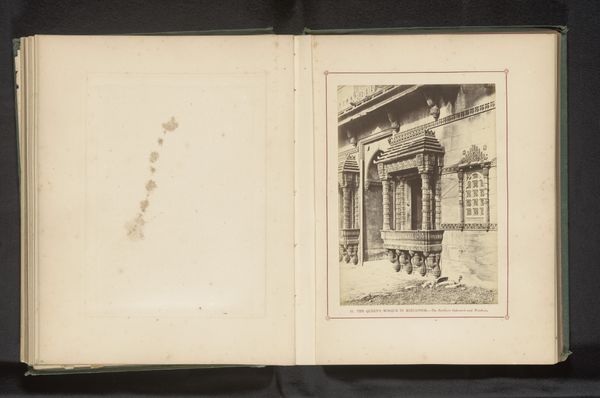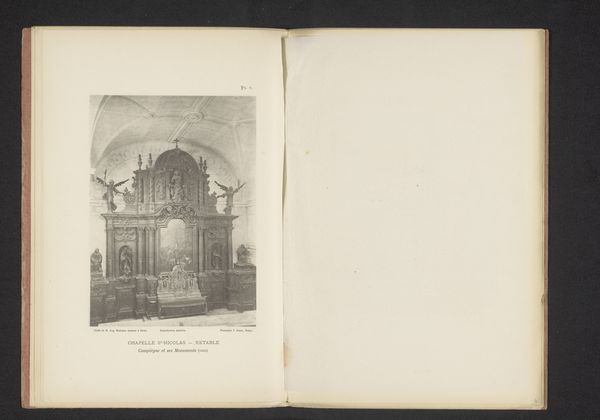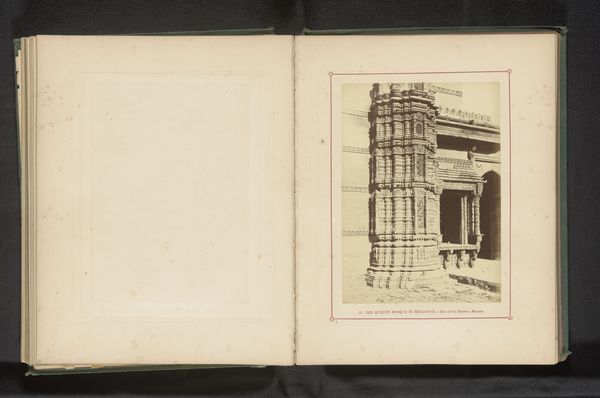
photography, albumen-print, architecture
#
asian-art
#
landscape
#
photography
#
column
#
watercolor
#
albumen-print
#
architecture
Dimensions: height 187 mm, width 135 mm
Copyright: Rijks Museum: Open Domain
Curator: The photograph before us, captured by Thomas Biggs, depicts the Minarets of the Sidi Bashir Mosque in Ahmedabad. It dates from before 1866, showcased in an albumen print. Editor: It feels so aged and grand. The towers command the frame with such stillness, yet I also feel a profound sense of impermanence—those ruins evoke the passage of time. Curator: The Sidi Bashir Mosque held significant cultural weight in Ahmedabad, India. Built initially as a mosque, its narrative is deeply intertwined with colonialism, eventually repurposed by the British as a train station. Biggs’s lens frames not just architectural aesthetics but also the evolving social narrative shaped by external forces. Editor: Visually, the twin minarets certainly hold spiritual symbolism. Verticality almost always alludes to transcending earthly realms, doesn't it? In several traditions, twin pillars flanking a gate denote a threshold, an entry into the sacred. Their dilapidated condition speaks of how these symbols are recontextualized by history and the forces of modernity. Curator: Precisely. In that light, these weren’t simply relics of bygone rulers; these became potent visual statements within colonial power structures. Photography, then, plays its crucial role of cataloging not merely the artifacts themselves but the shifts in control, influence, and perspective. Editor: It’s a fascinating paradox – a static photograph conveying such kinetic socio-political narratives. The almost monochromatic palette reinforces that archaic sentiment, making one wonder about the stories echoing inside and outside those stone walls. Curator: Reflecting upon Biggs' photograph allows one to comprehend that beyond documented structures, there were profound impacts exerted upon cultures through changing landscapes, policies, and shifting interpretations – themes still very relevant today. Editor: Ultimately, the photographic encapsulation serves as a poignant, still-standing representation of architectural and cultural legacies. These are now seen as poignant symbolic echoes resounding well past their original context.
Comments
No comments
Be the first to comment and join the conversation on the ultimate creative platform.
